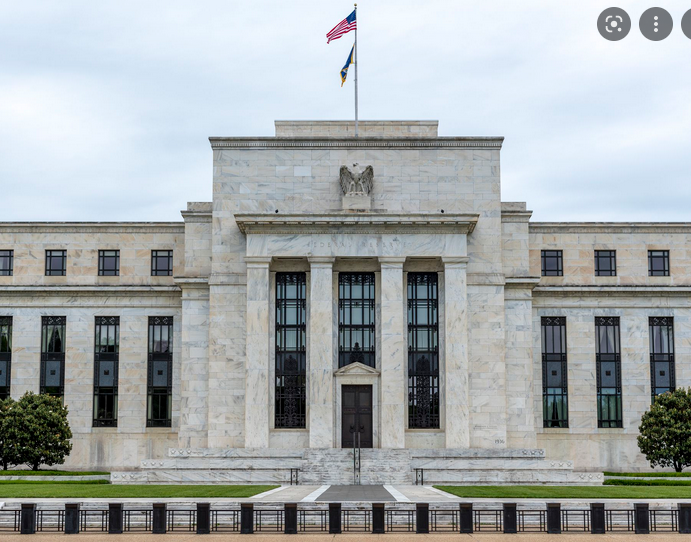Federal Reserve chairman Jerome Powell is talking tough and warning of more interest rate pain to come. At the same time, Fed officials are now admitting that their sized-up rate hikes won’t even be sufficient to tame the price inflation they have helped create. That’s because fiscal policy under the Joe Biden administration has gone off the rails. Over the weekend, the Federal Reserve Bank of Kansas City released to the public a white paper titled “Inflation as a Fiscal Limit” for purposes of shifting more blame to elected officials. The paper states that this year’s inflation spike “could not have been averted by simply tightening monetary policy. The conquest of post-pandemic inflation requires mutually consistent monetary and fiscal policies to avoid
Topics:
Stefan Gleason considers the following as important: 6a) Gold & Monetary Metals, 6a.) Gold Standard, Featured, newsletter
This could be interesting, too:
RIA Team writes The Importance of Emergency Funds in Retirement Planning
Nachrichten Ticker - www.finanzen.ch writes Gesetzesvorschlag in Arizona: Wird Bitcoin bald zur Staatsreserve?
Nachrichten Ticker - www.finanzen.ch writes So bewegen sich Bitcoin & Co. heute
Nachrichten Ticker - www.finanzen.ch writes Aktueller Marktbericht zu Bitcoin & Co.
Federal Reserve chairman Jerome Powell is talking tough and warning of more interest rate pain to come. At the same time, Fed officials are now admitting that their sized-up rate hikes won’t even be sufficient to tame the price inflation they have helped create.
That’s because fiscal policy under the Joe Biden administration has gone off the rails.
Over the weekend, the Federal Reserve Bank of Kansas City released to the public a white paper titled “Inflation as a Fiscal Limit” for purposes of shifting more blame to elected officials.
The paper states that this year’s inflation spike “could not have been averted by simply tightening monetary policy. The conquest of post-pandemic inflation requires mutually consistent monetary and fiscal policies to avoid stagflation.”
n other words, the Biden administration’s expansionary fiscal policy is working at cross-purposes with the Fed’s attempts to tighten monetary policy. The consequence will be economic stagflation.
It’s a stunning critique given the source. Central bankers normally go out of their way to avoid commenting on fiscal policy for fear of getting involved in politics. But apparently they’ve become exasperated by the level of fiscal irresponsibility being implemented by Congress and the White House.
Barack Obama’s former top economic advisor, Jason Furman, has decided he can no longer sit idly by while members of his own party run the country’s finances into the ground.
He called Biden’s unilateral move to forgive hundreds of billions of dollars in student loans “reckless.”
Student loan forgiveness was initially supposed to cost around $300 billion. But – surprise, surprise! – that number turned out to be grossly understated. The latest estimates show it will add at least $500 billion to the federal budget deficit.
As the national debt explodes at the same time as the Fed is hiking rates at its most aggressive pace in decades, the government faces a massive increase in debt servicing costs in the years ahead. Interest on the national debt is set to become the single largest component of the federal budget.
But instead of forcing Uncle Sam to tighten his belt, higher interest rates will only exacerbate the problem. Faced with rising interest costs, the Treasury Department will move to borrow even more money to avoid making cuts elsewhere.
As a consequence, rate hikes won’t tame inflation. The Fed will have no choice but to continue enabling the government’s spending spree by creating new currency and buying Treasuries in whatever amounts are necessary to keep federal finances afloat.
The authors of the Kansas City Fed’s paper state that central bankers will be to get control over inflation “only when public debt can be successfully stabilized by credible future fiscal plans,”
Such plans aren’t currently being made by elected officials. They are more interested in bribing voters ahead of the mid-term elections.
As for investors, they are stuck in a difficult place between the Fed’s attempts to tighten and the Biden administration’s inflationary spending schemes.
Jerome Powell and company are expected to serve up another punishing 75 basis-point rate hike in September. Powell admitted in comments at central bankers’ Jackson Hole gathering last Friday that higher interest rates will “bring some pain to households and businesses.”
Investors who are betting on interest-rate sensitive bonds or stocks may also be in for some pain ahead. Stagflation erodes the real returns offered by fixed-income instruments and dampens the growth prospects for large corporations.
Few asset classes do well during periods when rates are rising and growth is slowing. But one asset class with very real potential to outperform is precious metals.
Gold and silver tend to shine when social mood dims and investors seek safe havens. So far this year, however, gold and silver have attracted little interest – at least among traders and investors in conventional financial markets.
Fed rate hikes have boosted the U.S. dollar’s exchange rate on foreign currency markets. That, in turn, has triggered trading algorithms to sell gold and Wall Street cheerleaders to pooh-pooh it.
But this illusory dollar “strength” is only temporary. What isn’t temporary is the depreciation of the Federal Reserve Note’s purchasing power. History shows that the more value it loses, the more gold and silver prices will eventually readjust on the upside.
Tags: Featured,newsletter

